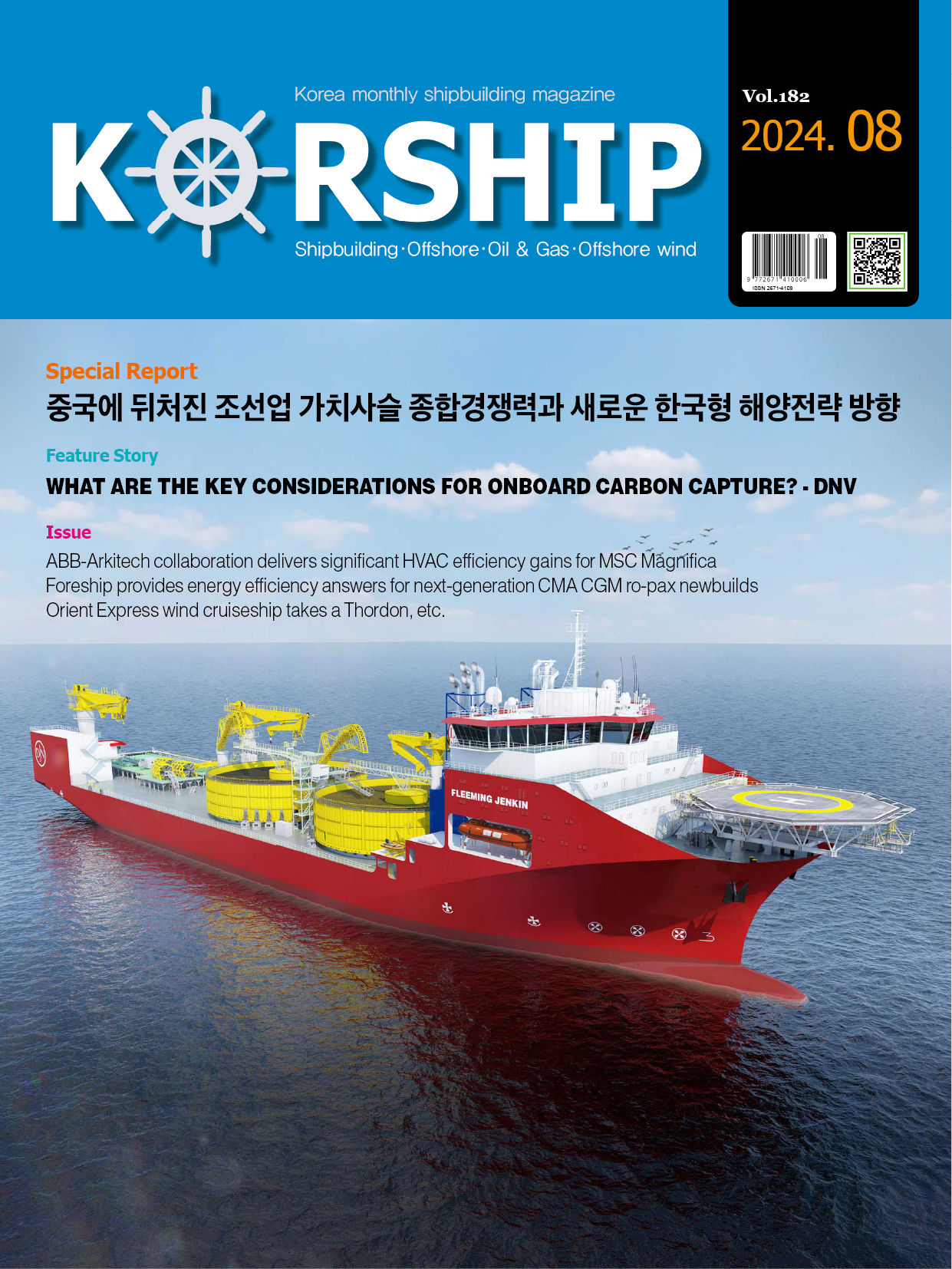Feature Story MOMENTUM IS EXPECTED ON THE HYDROGEN MARKET
페이지 정보
작성자 최고관리자 댓글 0건 조회 982회 작성일 24-08-14 18:18본문
Hydrogen is set to play a major role in the energy revolution. As an energy storage medium, it temporarily stores electricity generated by wind and solar power, for example. But hydrogen was an important gas for industry, long before the climate crisis forced people to change course. Its importance as a green energy source is now creating movement on the market, which is also being driven by a number of new technologies.
Hydrogen can be produced through the electrolysis of water and converted back into water in fuel cells. This generates electricity. This cycle is what makes hydrogen so valuable as a storage medium for excess electrical energy. It is "green", or climate-neutral, when the electricity used to produce it comes from renewable energy sources, for instance wind or solar energy. According to predictions for the near future, sophisticated electrolysers will make it possible to achieve an efficiency of around 70 per cent when converting green energy into hydrogen.
ENABLER OF DECARBONISATION
As things stand, many million tonnes of hydrogen are produced each year, most of which are used in the chemical industry. In 2019, this figure was around 117 million tonnes. The majority of this, 69 million tonnes to be precise, was created through steam reforming of natural gas, a process whereby methane and water are converted at high pressure and high temperature. This method has proved to be the most cost-effective up to now. Another 48 million tonnes were created as a by-product in the chemical industry. This industry and refineries are currently home to the largest consumers of hydrogen. Major manufacturers of industrial gases such as Linde and Air Liquide dominate the market. They recognise the need to switch to hydrogen. For instance, Linde describes hydrogen as a "key enabler of the transition to low- and zero-carbon energy – clean energy, to help meet climate change targets."
IMPROVED INFRASTRUCTURE, NEW H2 CONSUMERS
There is no disputing the fact that the increasing production of green hydrogen, which can take place locally at large solar fields or wind farms, is leading to more serious competition for established industrial gas companies. On the other hand, some of them boast more than 100 years of experience with handling hydrogen. Particularly in the transition phase before the entire demand is covered by green hydrogen, they will benefit from infrastructure expansion and a growing demand market. For the time being, the demand will continue to be covered by grey hydrogen(produced from natural gas) or blue hydrogen(also from natural gas plus CO2 capture). Infrastructure for distributing green hydrogen is being expanded in parallel to the optimisation of technologies for producing it. New consumers are also appearing, for instance in the transport sector (e.g. hydrogen-powered trains, production of synthetic fuels) and in various other industries. For example, hydrogen can replace coal as a reduction agent in the steel industry. Hydrogen can heat the kilns in the glass and cement industry. And it is required to convert waste CO2 into fertiliser.
MODERATE GROWTH UNTIL 2030, THEN ACCELERATION
According to the Fuel Cells and Hydrogen Joint Undertaking set up by the European Commission, a global market volume of around 150 billion euros can be achieved by 2030. Various studies have shown that the increase in the hydrogen demand will vary greatly according to sector. For Germany, a meta-study commissioned by the German National Hydrogen Council expects the demand for hydrogen to reach 47 TWh by 2030, up to 176 TWh by 2040, and up to 316 TWh by 2050. These figures do not include synthesis products produced using hydrogen. According to the same meta-study, the demand for hydrogen will increase significantly across the EU by 2050, especially in the transport sector (Appendix A.2.4). This effect becomes all the more apparent if the target is to reduce greenhouse gas emissions by 100%. In this scenario, most studies predict that the transport sector will make up 20 per cent of the demand, equal to almost 500 TWh. The study also specifies that synthesis products(e.g. synthetic fuels) will account for 20 per cent of the demand.
Throughout almost all of the Western world, there is agreement that hydrogen will be extremely important. A Working Paper published by the World Energy Council(in collaboration with EPRI and PwC) also expects demand to grow at a constant, moderate rate until 2030. After 2030 or 2035, the growth in demand will speed up significantly. Researchers are estimating demand to reach between 150 and 500 million tonnes per year by 2050.
SUN AND WIND IMPORTED INDIRECTLY
All of these estimates are approximate and vary greatly. No matter how high the hydrogen demand will actually be in future, large swathes of Europe will rely on imports from abroad. Other regions of the world experience longer and far more intense periods of sunlight, and the wind is stronger there too. Against this backdrop, European partners are currently working with counterparts in countries with high potential for renewable energy. Their primary aim is to promote hydrogen technologies. EU partners will then be set to benefit from the hydrogen produced. For example, there is a hydrogen partnership between Australia and Germany. The HySupply feasibility study examines how green hydrogen produced in Australia can be transported to Germany. Canada is another suitable H2 export country. Four joint projects funded by Canada and Germany and dedicated to reducing hydrogen product costs, among other aspects, have been underway since October 2022. These are accompanied by a hydrogen agreement between these two countries, aimed at establishing a transatlantic supply chain for green hydrogen. The first deliveries from Canada to Germany are expected to begin in 2025.
Promoting hydrogen production in Africa is an obvious, yet challenging, strategy. There is plenty of land and natural energy available in the form of sun and wind. This is illustrated by way of example in the H2Atlas for the Sub-Saharan region and West Africa. Based purely on calculations, in West Africa alone up to 165,000 TWh of green hydrogen could be produced per year, at an affordable price of less than 2.50 euros per kilogram. But the conditions for generating hydrogen are usually challenging. An important factor is fresh water, which is currently still required for electrolysis. Seawater desalination is possible nowadays. As part of the H2Mare flagship hydrogen project a technology is being developed which can produce hydrogen directly from seawater. In future, this could enable hydrogen to be manufactured directly at offshore wind farms.
Safety must not be compromised when setting up electrolysis systems and other infrastructure to transport hydrogen in Africa. Hydrogen is combustible; it is classed in explosion group IIC. Any explosions would have a devastating effect and must strictly be prevented. Explosion protection is governed internationally by the IEC 60079 and IEC 80079 standards series. International standard ISO 22734 describes how to design safe electrolysis systems. It goes without saying that these standards also have to be implemented in African countries and at decentralised locations where electrolysis will be performed in the direct vicinity of solar fields or wind farms in future.
ARTIFICIAL PHOTOSYNTHESIS ON THE RISE
An even more futuristic approach forms the basis of global efforts to produce green hydrogen right next to solar modules in a direct process that does not need solar energy to be converted into electricity. Solar modules which generate a voltage of more than 1.6 volts are required for this. H2Demo is currently working on developing a demonstrator for direct solar water splitting. The current project, coordinated by Fraunhofer ISE, will come to an end in 2026. Before then, the aim is to produce modules with a size of at least 1300 cm2 and a conversion efficiency of over 15 per cent. This is the level at which the hydrogen generated in this way starts to be economically competitive compared to fossil fuels. Promising results have been achieved so far. For years now, many other scientific locations worldwide have been researching "artificial photosynthesis" based on tandem solar cells made up of III-V semiconductors. However, it is likely to be many years until this is implemented on a large scale.
■ Contact: R. STAHL www.r-stahl.com












